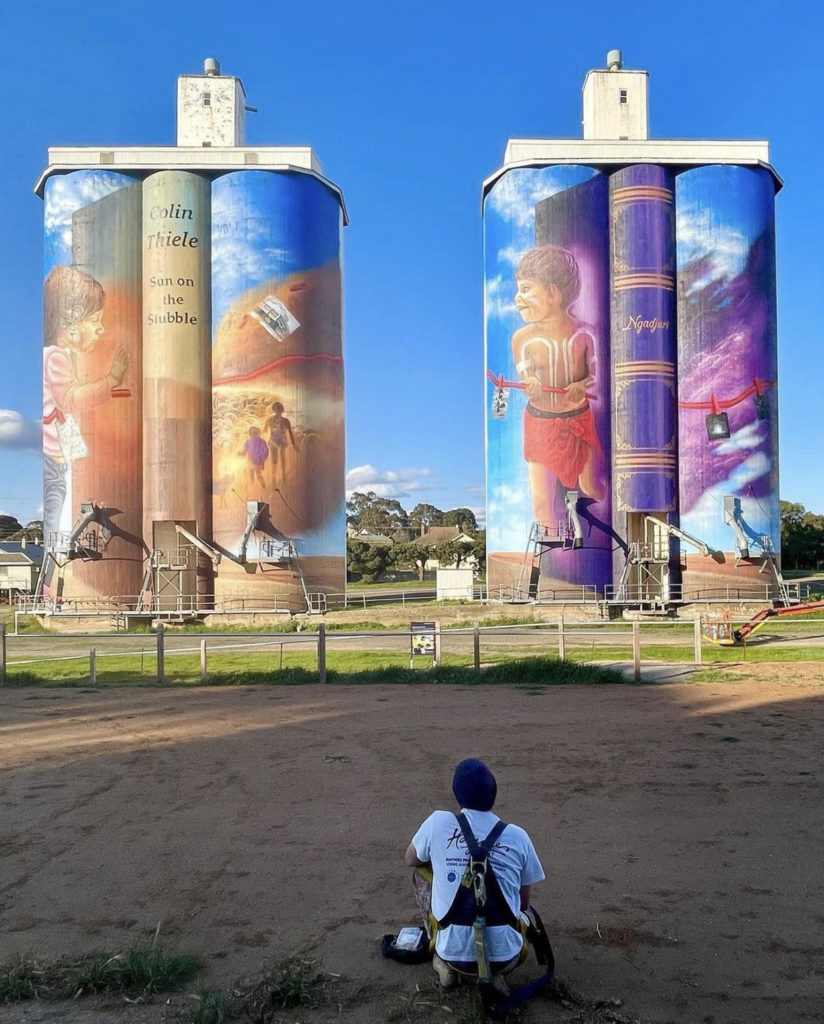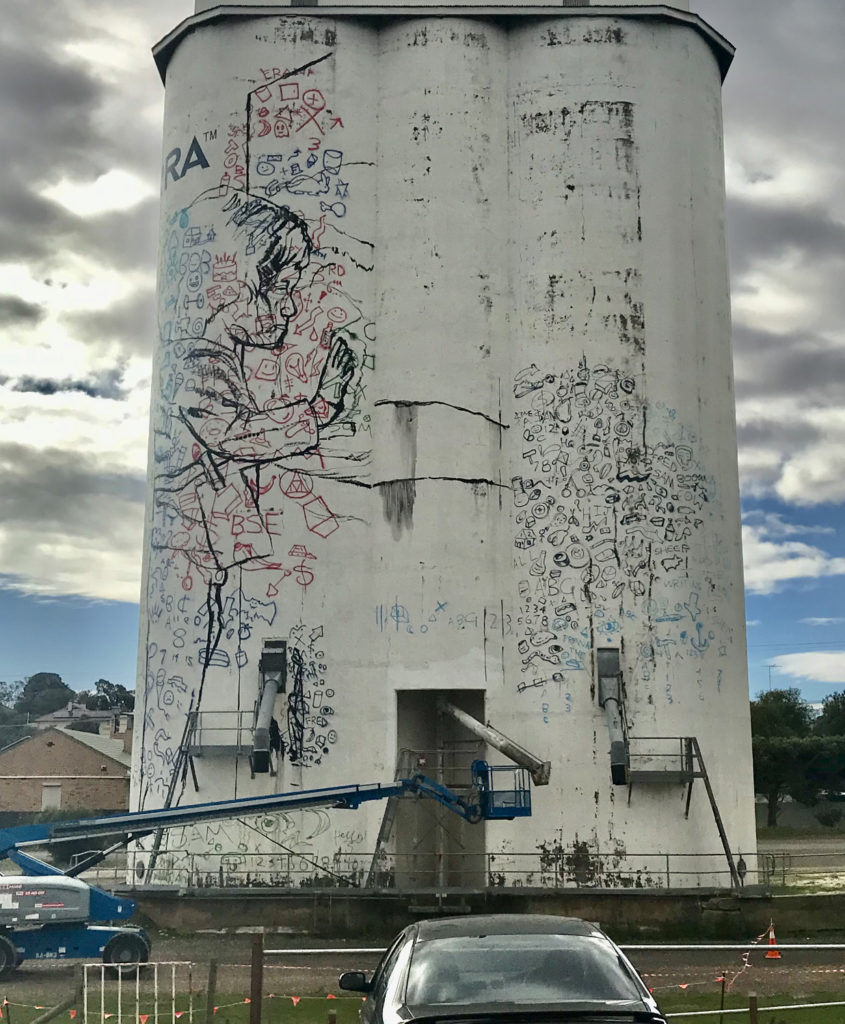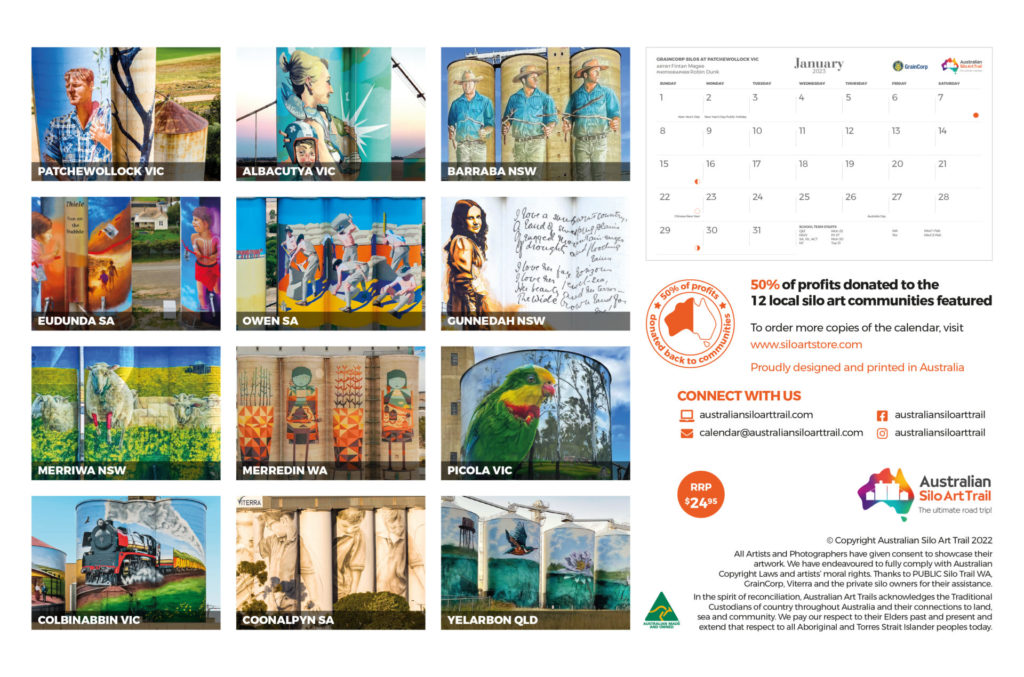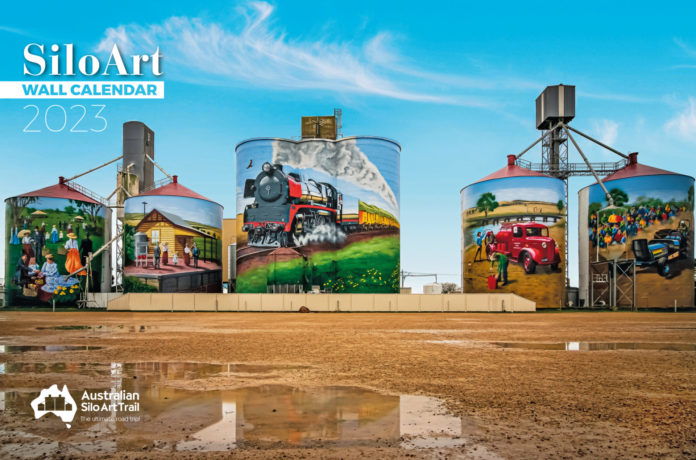If you’ve ever stood in awe at the foot of one of Australia’s painted silos and wondered just how on earth an artist is capable of painting on these 30 metre tall canvases, then read on to get one artist’s eye view on the incredible process.
The town of Eudunda in South Australia is fortunate enough to have silos painted by Adelaide artist Sam Brooks. The town, just over 100 kilometres north east of Adelaide, was the birthplace of renowned Australian author Colin Thiele, and one of his beloved children’s stories forms the basis of the silo art.
While this mural reflects much of Sam’s other works in telling a story of place, people and culture it is unique in being the first silo art in Australia which highlights two cultures coming together and sharing stories and histories.

Planning
As with most silo art, the process involved consulting with the local community to discover what they wanted to have represented on their town silo, and Sam was able to encourage the townspeople to trust in his imaginative design.
Instead of a typical farming or rural image, Sam was keen for the silo’s artwork to tell a unique story and motivate people to choose to travel to Eudunda to see something different to anywhere else. His theme over two silos includes a European perspective with Colin Thiele’s book ‘The Sun on the Stubble’, and local farming history references and the second silo showing the local indigenous history and stories.

On each silo, a child is featured and they are connected to each other by a red string they are holding to signify learning about each other’s histories, cultures and stories. One silo features the story by Colin Thiele, and shows farming images as well as local industries, while the other has the Ngadjuri indigenous perspective and dreaming stories.
Linked together with the red string line, the silos represent the artist’s impression of the innocence of children learning about each other’s history and culture with open minds, through exploration and play.

From Design to Execution
Prior to painting these silos, they had to be cleaned which Sam did himself using a pressure hose from a boom lift. Not the easiest of jobs when there were freezing temperatures and a crumbling façade to contend with.
After cleaning the structures, Sam then painted random marks and words all over the silos to act as grid enabling him to get proportions correct. It was at this stage of the process that he drew more than a few worried looks from locals wondering what they were in for, but he was able to reassure people that it was merely a process to help him to paint in smaller sections. He did this by using an iPad which had the completed design overlaid in a semi-transparency over the top of his grid markings.
Another aspect of the clever design is having the spines of the books incorporated in the curves of the silos making the finished result something special to see and challenging to photograph. There are many different angles to capture and small details and symbolism to find in the overall painting.
Every part of the design and overall effect is in the artist’s thought process including the choice of bright colours used to make the silos easy to spot from afar and impossible to pass by. Make sure when visiting these silos to take the time to look for the smaller details, including hidden dreaming stories in the stars of the painting, which glow in the dark and match the night sky.

Further information:
For guides and maps on where to see more silo art, visit Australiansiloarttrail.com and for year round viewing at home, you can buy the Australian Silo Art calendar from www.siloartstore.com.
The calendars are designed and printed in Australia, and your purchase will help regional communities, with 50% of the profits donated back to the 12 communities featured.



